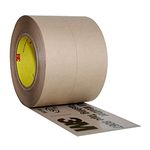A bale of errors
I wish to alert your editorial staff to the misuse of some common words in your last issue (FHB #145). I first noted an error in “Pneumatic-assist tub placement” (“Tips & Techniques,” p. 30). The author states that an inner tube from a “hay bailer” was used. The machine used to bale hay is a baler, as I’m sure your agrarian readers noted.
Imagine my surprise when I reached p. 73 and read about the “bale” on Campbell Hausfeld and Znex nailers! In fact, these nailers have a bail—a wire hoop, as you find on a bucket or a spinning reel. If they had a bale, a bundled quantity of goods like straw, hay or cotton, they probably would have been rejected outright for prohibitive weight and poor balance.
I decided to write to you because the language use in your magazine is often exceptional. Few trade publications pay as much attention to grammar and syntax as yours. Unfortunately, your editorial staff didn’t catch these errors early enough to bail out the authors this time.
—Christopher N. Griffiths, Lafayette, IN
Makita offers switchable trigger
In the article “Choosing a Framing Nailer” (FHB #145, pp. 68-75), the authors overlooked a key feature in regard to triggering systems and our AN901 and AN922 framing nailers. They wrote of another manufacturer’s tool as being the only one to offer a true switchable trigger.
In fact, both of our nailers feature a manual switch allowing the operator to change the triggering action between bounce- and sequential-firing. In addition, the switch on our AN922 has an additional setting allowing the trigger to be set to “off,” in which the tool will not fire at all.
We are pleased that our AN901 was picked as a favorite; however, we think it’s important to correct this oversight.
—Vince Caito, marketing communications manager, Makita USA Inc.
Concerns about shower thresholds
I have a concern about the shower-pan threshold details shown in the “Q&A” column (FHB #145, p. 20). Years of interior trim carpentry have allowed me to work alongside some excellent tilesetters. What I learned is that any wood in a shower threshold is courting problems. Despite the best intentions, water has a way of getting everywhere you don’t want it, and that means rot when it’s mixed with wood in a concealed space. A curb built with a base of concrete block leaves no place for rot to fester. Thereafter, the tilesetter is free to use any preferred finish details.
—Bruce Williams, Durango, CO
Trex works for shower thresholds
The problem with all the shower-pan thresholds pictured both in the “Q&A” column (FHB #145, p. 20) and in Tom Meehan’s recent article (FHB #141, pp. 66-71) lies with the use of framing lumber for the construction of the threshold. It’s going to shrink.
Ideally, this curb should be constructed of reinforced concrete, but a suitable alternative that I have used is Trex (540-678-4070; www.trex.com), the synthetic decking product. Trex does not shrink, is impervious to moisture and has the additional ability to hold nails and screws, making it a more flexible solution than the cast-concrete curb. We buy Trex in stock sizes and rip it to width.
—David Onkels, Custom Homes, Bellingham, WA
Plywood threshold won’t shrink
The surest way to have problems with shower thresholds is to frame them with stacked dimensional lumber as shown in your two details (FHB #145, “Q&A,” p. 20). Shrinkage of this frame is inevitable, and the movement will stress all the other joints. We always insist that curbs be framed in plywood to reduce this risk.
—Edward R. Baldwin, Hastings-on-Hudson, NY
Tom Meehan replies: There are many ways to build a shower-pan threshold, and I’ve used just about every one. The poured-concrete threshold is most likely the best way. I use that method when I do a commercial steam shower, but in a residential shower, it may be overkill. Don’t get me wrong; I think overkill is a good thing. But 90% of the installers in this country use framing lumber for the base of their thresholds. I probably can’t change their methods, but maybe I can make their installations work 99% of the time with just a few modifications.
Yes, wood shrinks, but shrinkage affects only the joint where the horizontal threshold meets the vertical wall or jamb. My shower-pan liner wraps up this corner to prevent leaking into the framing. The liner is waterproof and flexible, and it will expand. If the threshold is properly pitched into the shower, there will be no problems. My crew and I have installed two or three of these thresholds every week for many, many years and have never had a callback about them.
Why not use glulam beams?
I read the article “Built-up Center Beams” by Rick Arnold and Mike Guertin in the December/January issue (FHB #144, pp. 70-75). Maybe I’m missing something, but that seems like an awful lot of work when you could just order a glulam beam and be done with it.
—Erik Nicewarner, via e-mail
Mike Guertin replies: You’re right: Glulams are a great option for center beams. I don’t typically use them because they aren’t stocked locally and therefore are costly when I have to special-order them. I believe the same is true for many builders in various regions of North America.
Glulams and other engineered-lumber products, such as laminated-veneer lumber (LVL) and parallel-strand lumber (PSL) as well as solid-lumber beams, are all viable options for center beams. They sometimes save labor and can often span greater distances between support columns. I’m a big fan of using engineered lumber. Aside from the instructions in our article for laying out and building the layers of dimensional lumber to make the beam, the rest of our process to level, straighten and support a beam will work on any beam types.
Readers considering glulams, PSLs and solid-lumber beams should take beam weight into account. They can be ordered full length, height and width, and usually require a crane or piece of heavy equipment to put them in place.
Affordable homes don’t have to look like trailers
In his article “Building Affordable Houses,” Fernando Pagés Ruiz presents some good ideas for cutting building costs by eliminating structural redundancies (FHB #145, pp. 63-67). His team approach brings together various trades to pitch in ideas and to blur some lines between those trades.
All good so far. But he has also eliminated the artistic potential of a home, whether affordable or extravagant. His decision to limit exterior-siding colors and to use the same roof color on every house is exactly why the homes he builds all look the same—one step up from a trailer.
Leaving the architect off his team of subs was his first mistake. He should realize that just because he can sell a house doesn’t mean that it is both artistically and functionally well designed.
—Robert D. Tonsing, Morrison, CO
Fernando Pagés Ruiz replies: I agree wholeheartedly. As a graduate of the California Institute of the Arts, I value aesthetics highly in my life and in my work. Perhaps I should have made the point more emphatically in my article, but I’ll do it here: Ugly homes don’t sell at any price. I designed my affordable homes to fit into older neighborhoods and to accommodate historical guidelines. More than once, my plans have passed strict architectural review. I limit color choices to keep the price down, but those who opt to pay a little extra can get as extravagant as they want. My plan may not suite everyone; some folks require more pizzazz. But I work in a conservative town, and I have to build to local taste. At first my buyers respond to price; when they drive up, however, they go for the design and functionality. I am proud to build a home buyers fall in love with, not settle for.
Clarifying affordable-home costs
Two comments regarding “Building Affordable Houses” in the February/ March issue (FHB #45, pp. 63-67). First, it would be helpful to know more detail regarding the costs included in the $45 per sq. ft. cited in this article.
Second, the author refers to the “security of a basement” in Tornado Alley. This is actually a false security. Recent research indicates that basements require a “safe room” for protection against tornado or hurricane dangers. Even though a basement may provide some protection against flying debris, it is offset by the dangers of building collapse into the basement.
—Michael H. Trautman, Bloomfield Hills, MI
Fernando Pagés Ruiz replies: The $45 figure does not include land, sales costs or interest. All other costs are included. And in fact, we do incorporate a safe room under the stairs, but within the limits of a short article, much is left out.
Debating fuel choices for affordable homes
I applaud the organized efforts of Mr. Ruiz and his subcontractors to knock some first costs out of his starter houses (FHB #145, pp. 63-67). However, when the decisions affect operating costs as well, one must be a little more careful. The author says he saved $300 by eliminating the gas line and going to an all-electric house. Let’s look at the math for just the domestic hot water. Forty gallons of water a day, heated to 70°F using electricity at 12¢ per kwh, costs about $300 a year (ignoring storage and distribution losses). The same water heated with gas at 70¢ per therm costs about $75 a year. A 16-month payback is a pretty good deal, and that’s just for the hot water. In most cases, additional operating savings could also be found by using a gas furnace rather than a heat pump. (Of course, it’s hard to put real numbers on space-heating costs without more information on climate, loads, use, etc.) Many mortgage lenders are becoming well versed on energy and maintenance costs, and include these numbers when calculating loans. Builders who shave a few bucks off the capital cost of a house, only to have it go right back into energy costs within the first 16 months, are not doing anyone any favors.
— Jim Huffman, Princeton Junction, NJ
Bob Ruskamp, Fernando Pagés Ruiz’s energy consultant, replies: In many locations in the United States, electric rates are low (much lower than the 12¢ used in your example) and competitive with natural gas. Lincoln, Nebraska, happens to be one of these areas.
Mr. Ruiz looked into the electric and gas options and made the best choice based on the local fuel-pricing conditions. I evaluated the past 12 months of actual electric bills for 13 of Mr. Ruiz’s homes. Here’s the information I found.
For these 13 homes, the cost to heat water with electricity averaged $111.70 per year (average kwh cost was 3.5¢). The cost to heat the same amount of water with natural gas is estimated to be $120.52 per year (average cost per therm was 62¢), making an annual saving with electric water heaters of $8.82.
As for space heating and cooling, the average annual cost to heat and cool these homes with the electric heat pumps was $210.70. The estimated annual cost to heat and cool these homes with a natural-gas furnace and electric air conditioner would have been $351.64. The annual saving with heat pumps is $140.94.
Fine Homebuilding Recommended Products
Fine Homebuilding receives a commission for items purchased through links on this site, including Amazon Associates and other affiliate advertising programs.

Affordable IR Camera

8067 All-Weather Flashing Tape

Handy Heat Gun






















